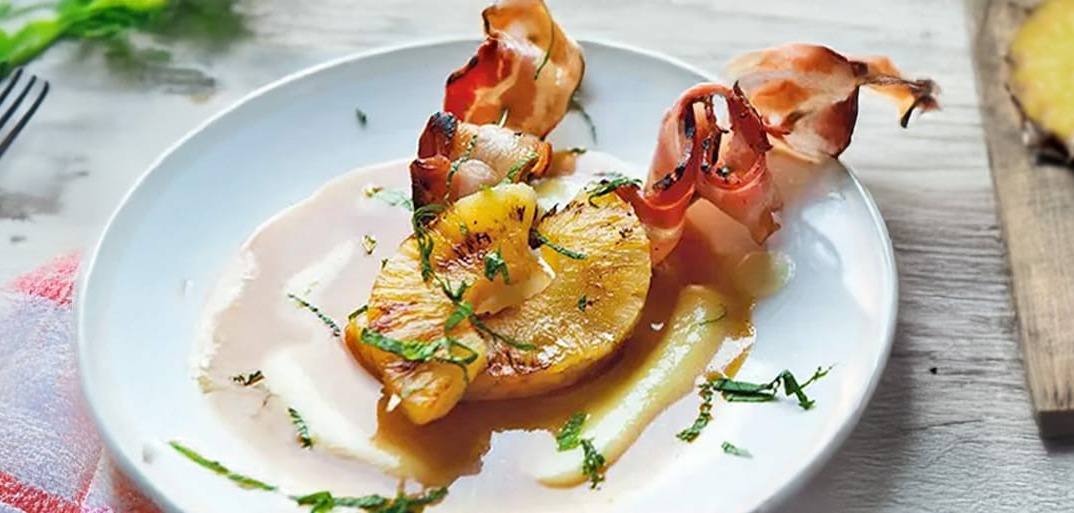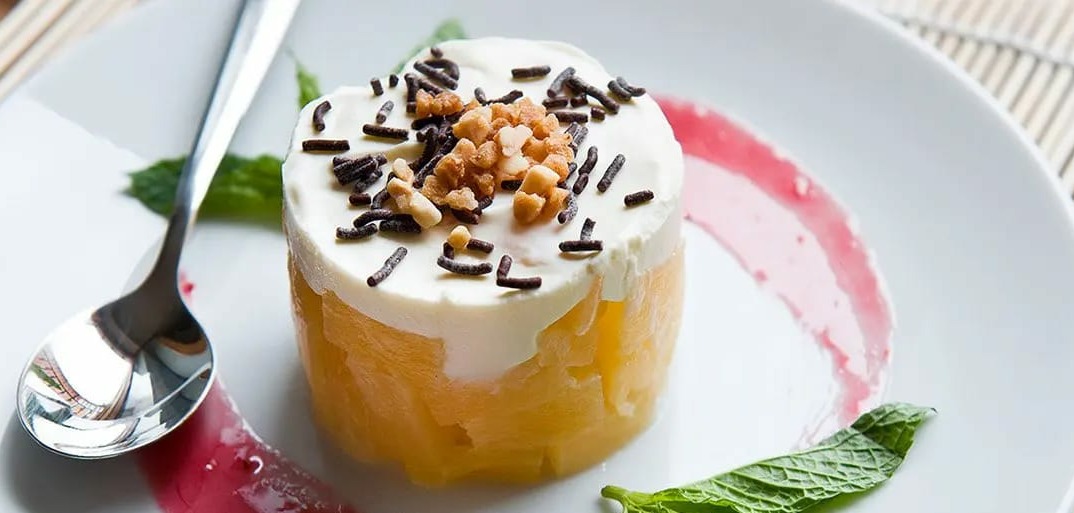
Wellness for the palate.
The sun fruit.
“You can’t really grow up in a place more beautiful than this, can you?”, says Priscilla Montero, looking up at the sky, which is once again shining in the most beautiful blue. Here, in the heart of Costa Rica, our pineapples ripen in protected natural surroundings. “For us, it’s all about the ideal time to harvest”, Priscilla explains. A pineapple, unlike other fruits, does not ripen after harvest. The pickers therefore harvest it only when it has the right sugar content and is beautifully yellow and sweet.
To find the exact moment, Priscilla and her colleagues check the ripeness of the fruit every day – sometimes several times. Priscilla also knows the reason why our pineapples are sweeter, juicier and tastier than conventional fruit. “They get to bask in the sun longer with us”, she says with a laugh, “it’s like a vacation here”.
Our master growers care about more than just the fruits they grow – they also prioritize nature. They maintain nature conservation areas, take care of reforestation, reduce water usage and recycle waste. Plus, they prioritize the well-being of the employees on the finca. Our master growers invest in their education, provide them with medical care or offer a free transportation service. We also partner with the Fruktus Foundation to improve the local community through education, health and welfare initiatives.
Priscilla and her colleagues carefully remove the ripe fruit from the bush by hand. Because even if it doesn’t look like it, “you have to be gentle with the pineapple”, says Priscilla, “because they are sensitive to pressure. Just like us humans”.

Good to know
Our sweetest and juiciest pineapple has ripened for a long time under the Caribbean beach sun and is incomparably aromatic. A lot of love and the knowledge of our Master Growers give it its typical golden hue – a sign that it is ready to eat.
More interesting factsabout pineapples
History
The fruit originates from the Mato Grosso in the Brazilian Amazon. Shortly after its discovery, it was spread throughout Asia by the Portuguese and Spanish. Central America then began to produce the current varieties for cultivation.

Nutritional information
| Vitamin B (mg/100g) | 0.9 mg |
| Vitamin C (mg/100 g) | 19 mg |
| Vitamin E (mg/100 g) | 0.2 mg |
| Potassium (mg/100 g) | 180 mg |
| Calcium (mg/100 g) | 16 mg |
| Magnesium (mg/100g) | 16 mg |
| Calorific values: Energy | 56 kcal |
| Fett thereof |
0.15 g |
| Monounsaturated fatty acids | |
| Polyunsaturated fatty acids | |
| Carbonhydrates | 12.4 g |
| of which sugar | 12.4 g |
| Protein | 0.46 g |
| Salt | 5 g |
| © German Food Code 3.02 |

Tips and special features
Pineapple belongs to the bromeliad family and is relatively easy to propagate. To do this, you just need to root the leaf head in a glass of water. Then place the cutting in a pot in a sunny room location and let it grow.
Storage
It is best to store the tropical fruit at room temperature. But it’s better not to leave it too long, because pineapples quickly become overripe.
Country of origin
Our pineapples thrive for example in the tropical climate of Costa Rica, where they receive as much sun and rain as they need to ripen optimally, with an average temperature of 22 to 25 degrees Celsius.
Taste in harmony with people and nature
We use our modern, digitally controlled water management system to save water, always rely on natural predators first when dealing with pests and protect the bees.
More about our social responsibility








